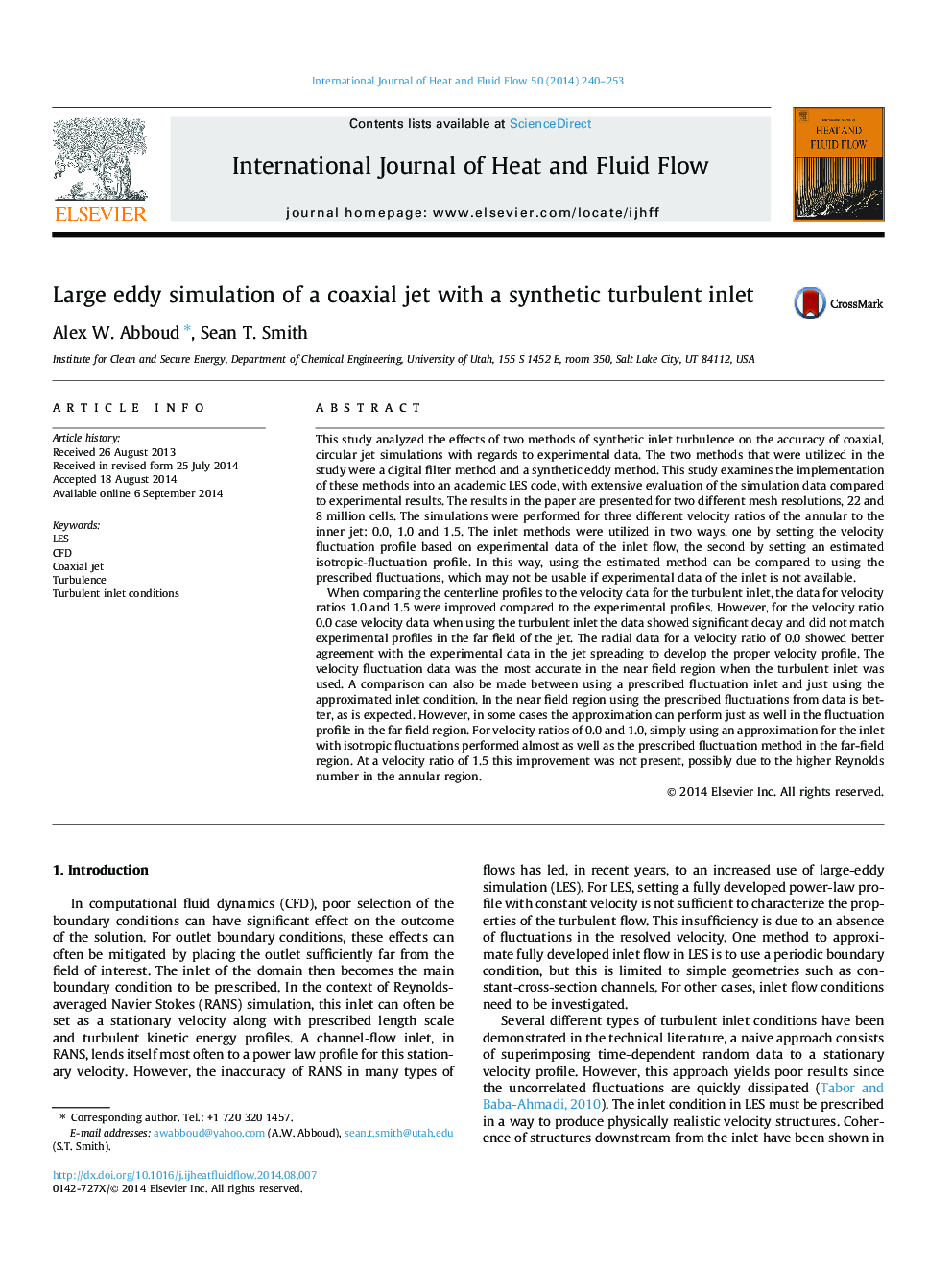| Article ID | Journal | Published Year | Pages | File Type |
|---|---|---|---|---|
| 7053623 | International Journal of Heat and Fluid Flow | 2014 | 14 Pages |
Abstract
When comparing the centerline profiles to the velocity data for the turbulent inlet, the data for velocity ratios 1.0 and 1.5 were improved compared to the experimental profiles. However, for the velocity ratio 0.0 case velocity data when using the turbulent inlet the data showed significant decay and did not match experimental profiles in the far field of the jet. The radial data for a velocity ratio of 0.0 showed better agreement with the experimental data in the jet spreading to develop the proper velocity profile. The velocity fluctuation data was the most accurate in the near field region when the turbulent inlet was used. A comparison can also be made between using a prescribed fluctuation inlet and just using the approximated inlet condition. In the near field region using the prescribed fluctuations from data is better, as is expected. However, in some cases the approximation can perform just as well in the fluctuation profile in the far field region. For velocity ratios of 0.0 and 1.0, simply using an approximation for the inlet with isotropic fluctuations performed almost as well as the prescribed fluctuation method in the far-field region. At a velocity ratio of 1.5 this improvement was not present, possibly due to the higher Reynolds number in the annular region.
Keywords
Related Topics
Physical Sciences and Engineering
Chemical Engineering
Fluid Flow and Transfer Processes
Authors
Alex W. Abboud, Sean T. Smith,
